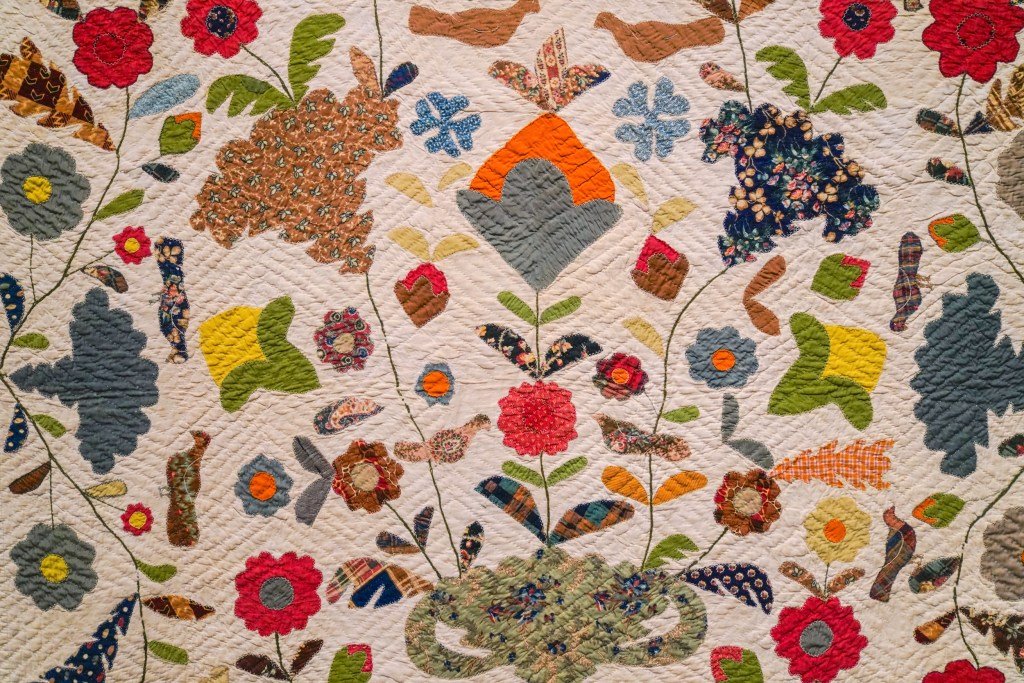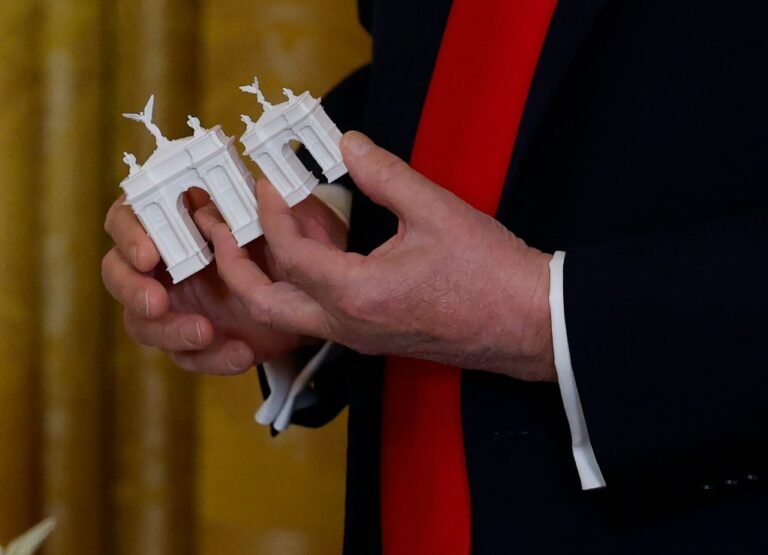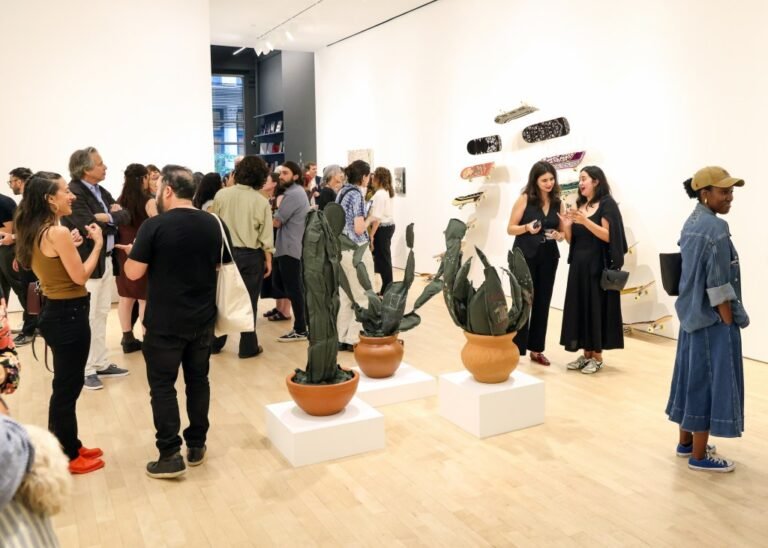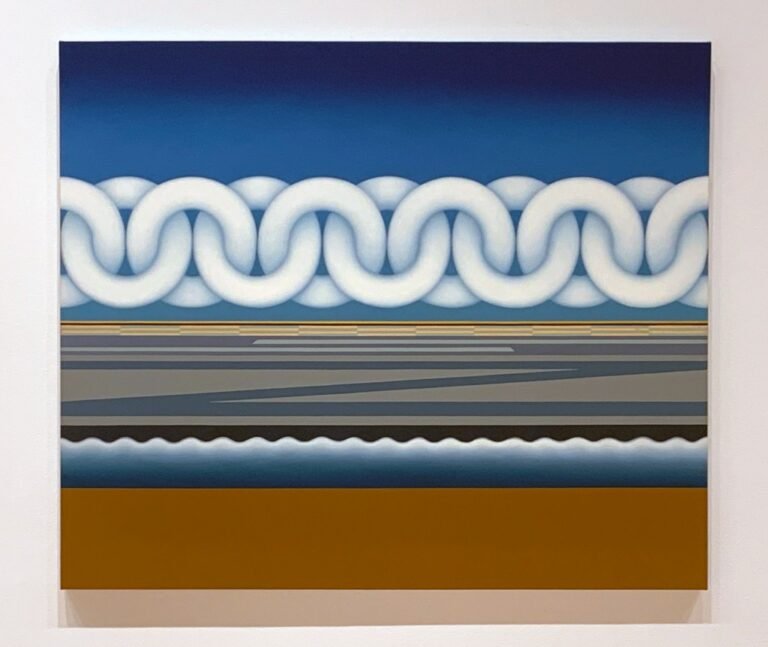

The fiber arts are experiencing renewed and rigorous recognition. Last year, for instance, modern and contemporary weaving loomed large in major exhibitions in the United States, which explored the craft’s ancient roots and impact on modern art, alongside high-profile shows around the world devoted to artworks made from fabric and thread. As writer-historian Glenn Adamson proclaimed, 2024 was the year that “the art world went on a high fiber diet.”
This year, amid a slate of shows exploring the rich possibilities of fabric, American quilts are having a moment in art museums from coast to coast. In-depth exhibitions showcase the craftsmanship and ingenuity of regional quilting communities in Routed West: Twentieth-Century African American Quilts in California at the Berkeley Art Museum and Pacific Film Archive (through November 30) and Of Salt and Spirit: Black Quilters in the American South at the Memphis Brooks Museum of Art (through January 4, 2026). Similarly, the 2024–25 exhibition Patterns in Abstraction: Black Quilts from the High’s Collection at the High Museum of Art in Atlanta spotlighted artful quilts from the institution’s permanent collection, all stitched by Black women. Unraveling the narrative potential of quilts, Fabric of a Nation: American Quilt Stories From the Museum of Fine Arts, Boston at the Frist Art Museum in Nashville recently related the country’s histories through textiles, and Indigo and the Art of Quiltmaking at the Taft Museum of Art in Cincinnati (through January 11, 2026) focuses on global dye traditions.

Adding a biophilic perspective to the mix, the American Folk Art Museum opened An Ecology of Quilts: The Natural History of American Textiles in late September, marking the museum’s reopening after a summer-long closure for renovations. Featuring 30 quilts from the 18th through the 20th century, the exhibition explores the bountiful ways that nature, industry, and quilt making entangle. Rather than emphasizing the quilters’ identities, it examines the relationships between natural and human-powered systems and processes, starting at the roots of quilt making: the lifeforms (plants, animals, insects) necessary to produce fabric — and, therefore, quilts.
An Ecology of Quilts opens with a trio of whole-cloth quilts: one an all-white field of cotton fabric embellished with patterns of raised dots and florals (“Cornucopia and Dots Whitework Quilt,” c. 1800–1820) contrasted by two brightly colored examples. On the opposite wall, botanical illustrations and vials of common, traditional dyestuffs, including insects (cochineal) and dried plant matter, introduce the fundamentals of natural dye, used to color the two vibrant quilts that start the show. A gradient of fabric swatches highlights the brilliance of the extracted hues: indigo (deep blue), madder root (bright red), and weld (golden yellow). Through an adjoining doorway, a case displays silk cocoons and handfuls of raw wool, linen, and cotton fibers, alongside squares of material woven from each, with an invitation to “please touch.”

From here, the show shifts to a standout section that exudes the layered lushness of a flourishing botanical garden. With an abundance of vivid vining blossoms, “Pot of Flowers Quilt with Birds” (c. 1860) radiates a feeling of unbridled joy and abundance. Its neighbor, “Flower Quilt” (c. 1955–63), an album-style quilt stitched by American sociologist Raymond F. Bellamy, reflects his interest in botany, carefully cataloguing a different type of flower in each square. Highlighting the symbolic language of plants, a green and white mourning quilt from the mid-1800s (“Members of the Freewill Baptist Church Presentation Quilt for William A. Sargent”) memorializes members of a church community with handwritten messages in ink, along with appliquéd weeping willows to represent sadness.
In the final gallery, a grouping of geometric quilts stitched from salvaged scraps speak to a history of thrift and resourcefulness in quilt making. Among these works are the dynamic, polyester and cotton “Pinwheel Variation Quilt” (1960) by Gee’s Bend quilter Malissia Pettway and artist Tomie Nagano’s “Ajiro-Monyo” (1995), made from vintage kimonos and drawing inspiration from boro textiles and woven basketry.

Although the exhibition’s subtitle, The Natural History of American Textiles, has the air of a college course and seems to promise a definitive deep dive, it’s actually more of an introductory sampler. A smattering of interesting tidbits on a wide range of topics (e.g., global trade, slave labor, the invention of the cotton gin, 19th-century herbaria, flower symbolism) pepper the wall texts. Many of these factoids could be the seeds for spinoff shows — and, taken together, could veer the curation into a muddled mess. But, like the “Philadelphia Pavement Quilt” (c. 1930) — which looks like a tidy grid of tiny, precise squares up close, but reveals its dazzling composition anew from a distance — the exhibition comes into focus on different levels. A slow, close viewing, spent absorbing each label and examining the corresponding details of the quilts, illustrations, and swatches, uncovers a web of connections between materials and methods, technology and trade, plants and people — and, ultimately, the hive of activity wrapped up in each quilt’s physical history. The gorgeous, well-considered selection of quilts also coheres on a purely visual level, as flowers, leaf motifs, and fabric scraps pinwheel across the surfaces.
The eclectic threads of An Ecology of Quilts merge to tell a story that starts outdoors, with seeds sprouting, blooming, and reaching toward the sun. Whether driven by a desire to document the beauty of flowers, turn castoff fabric fragments into cozy bedcovers, or harness the colors hidden inside plants, the show invites viewers to see the myriad ways that human ingenuity has interlaced with natural forces to shape quilting as an expressive American art form.







An Ecology of Quilts: The Natural History of American Textiles continues at the American Folk Art Museum (2 Lincoln Square, Lincoln Square, Upper West Side, Manhattan) through March 1, 2026. The exhibition was curated by Emelie Gevalt and Austin Losada.






